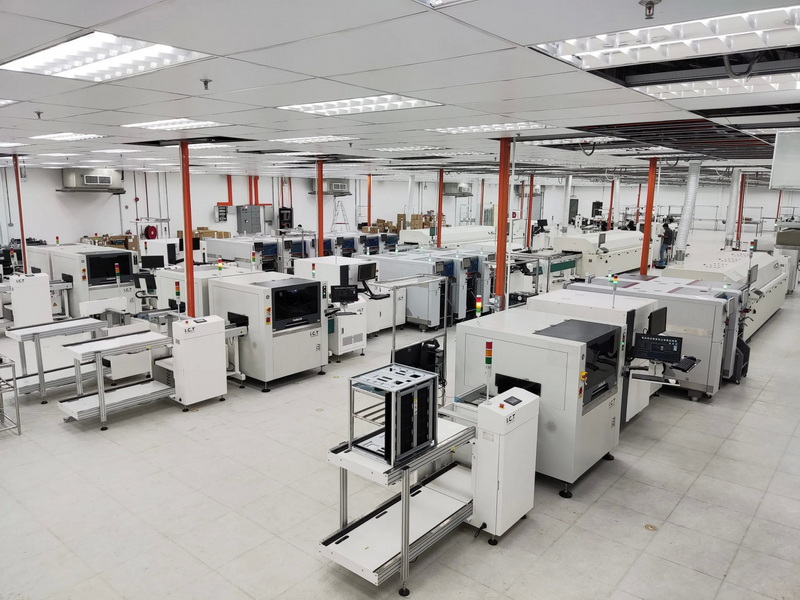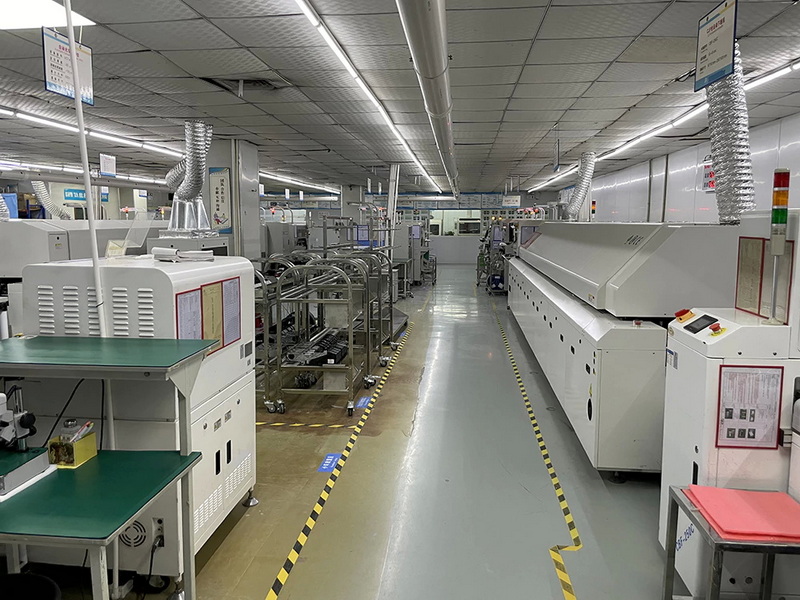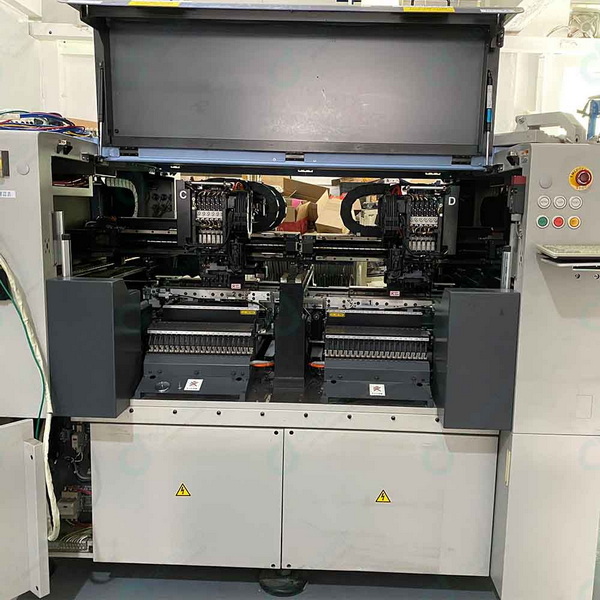Content Menu
● Understanding Multifunctional SMD Pick And Place Machines
>> Definition and Functionality
>> Key Features
● Benefits of Multifunctional SMD Pick And Place Machines
>> 1. Increased Production Speed
>> 2. Enhanced Accuracy
>> 3. Cost Reduction
>> 4. Flexibility in Production
>> 5. Integration with Smart Manufacturing Systems
● The Role of Technology in Enhancing Efficiency
>> Advanced Vision Systems
>> Real-Time Monitoring
>> Automated Calibration
● Challenges Overcome by Multifunctional Machines
● Case Studies: Real-World Applications
>> Case Study 1: Tech Innovations Inc.
>> Case Study 2: Global Electronics Corp.
● Future Trends in Electronics Manufacturing
● Conclusion
● FAQ
>> 1. What is a multifunctional SMD pick and place machine?
>> 2. How does a pick and place machine improve production speed?
>> 3. What technologies are used in multifunctional pick and place machines?
>> 4. Can these machines handle different types of components?
>> 5. What role does automation play in quality control?
In the competitive landscape of electronics manufacturing, efficiency and precision are paramount. The introduction of the multifunctional SMD pick and place machine has revolutionized production processes, enabling manufacturers to meet the increasing demands for high-quality electronics. This article delves into how these machines enhance production efficiency, exploring their features, benefits, and the future of manufacturing with automation.

Understanding Multifunctional SMD Pick And Place Machines
Definition and Functionality
A multifunctional SMD pick and place machine is an automated device designed to position surface-mount devices (SMDs) onto printed circuit boards (PCBs) with high accuracy. These machines utilize advanced technology to automate the assembly process, significantly reducing the time and labor involved compared to manual assembly methods.
Key Features
- High Precision: Equipped with advanced placement technology, these machines can achieve placement accuracy within ±0.035mm, making them suitable for intricate designs.
- Speed and Efficiency: Capable of placing multiple components simultaneously, they drastically reduce cycle times and increase throughput.
- Versatility: They can handle a wide range of component sizes and types, from small passive components to larger integrated circuits (ICs).
- Intelligent Software Integration: Many models incorporate sophisticated software for real-time monitoring and quality control, ensuring optimal performance throughout the production process.
Benefits of Multifunctional SMD Pick And Place Machines
1. Increased Production Speed
The ability to place components quickly is one of the most significant advantages of multifunctional SMD pick and place machines. Traditional manual methods are not only slower but also prone to errors. Automated systems can achieve placement speeds that far exceed human capabilities, allowing manufacturers to meet tight deadlines without compromising quality.
For example, a typical manual assembly line might take several minutes to place a few dozen components on a PCB. In contrast, a multifunctional machine can complete this task in a fraction of the time—often in just seconds—depending on the complexity of the board and the number of components involved.
2. Enhanced Accuracy
Accuracy is critical in electronics manufacturing. These machines utilize advanced vision systems that inspect components before placement and verify their position afterward. This built-in quality control minimizes errors and ensures that each component is placed correctly, which is vital for maintaining product reliability.
Moreover, with features like automatic height adjustment for different component types, these machines ensure that even slight variations in component size do not affect placement accuracy. This level of precision is essential in high-density applications where space on the PCB is limited.
3. Cost Reduction
By automating the assembly process, companies can significantly reduce labor costs associated with manual assembly. Moreover, the high precision of these machines reduces material waste due to fewer errors in component placement.
Additionally, the reduction in cycle time means that manufacturers can produce more units in less time, leading to increased revenue potential without a proportional increase in costs. This efficiency translates into better profit margins for companies that invest in multifunctional SMD pick and place machines.
4. Flexibility in Production
The multifunctional nature of these machines allows manufacturers to switch between different products with minimal downtime. This adaptability is crucial in today's fast-paced market where product lifecycles are shorter, and customization is often required.
For instance, if a manufacturer needs to switch from producing one type of PCB to another with different component requirements, modern pick and place machines can be reprogrammed quickly. This flexibility enables companies to respond swiftly to market demands without incurring significant downtime or costs associated with retooling.
5. Integration with Smart Manufacturing Systems
As industries move towards smart factories, multifunctional SMD pick and place machines play a crucial role in this transformation. They provide valuable data for production optimization and can be integrated into broader manufacturing execution systems (MES) for real-time monitoring and management.
This integration allows manufacturers to track production metrics such as yield rates, cycle times, and equipment performance continuously. By analyzing this data, companies can identify bottlenecks or inefficiencies in their processes and make informed decisions to enhance overall productivity.

The Role of Technology in Enhancing Efficiency
Advanced Vision Systems
Modern multifunctional SMD pick and place machines are equipped with sophisticated cameras that enable precise component recognition and placement verification. These systems can identify components based on size, shape, and orientation, ensuring that even complex assemblies are executed flawlessly.
The use of artificial intelligence (AI) within these vision systems further enhances their capabilities by allowing them to learn from previous placements. Over time, they can adapt their algorithms to improve accuracy based on historical data.
Real-Time Monitoring
With intelligent software integration, manufacturers can monitor production processes in real time. This capability allows for immediate adjustments based on performance metrics, enhancing overall efficiency.
For example, if a machine detects an increase in misplacements or rejects during production runs, it can alert operators immediately so they can investigate potential causes—whether it's an issue with component quality or machine calibration—before it leads to significant waste or delays.
Automated Calibration
Many machines feature automatic calibration systems that ensure consistent performance over time. This technology reduces the need for manual adjustments and minimizes downtime due to calibration errors.
Automated calibration not only improves efficiency but also enhances safety by reducing the risk of human error during setup processes. Operators can focus on more strategic tasks rather than spending time on routine calibrations.
Challenges Overcome by Multifunctional Machines
Despite their advantages, manufacturers face challenges in implementing automated systems. However, multifunctional SMD pick and place machines address several common issues:
- Human Error: Manual assembly is susceptible to mistakes that can lead to costly rework or product failures. Automation minimizes these risks by ensuring consistent accuracy.
- Production Bottlenecks: Traditional methods often result in bottlenecks during high-demand periods. Automated systems streamline production flows, alleviating these issues.
- Quality Control Issues: Maintaining quality across large production runs can be challenging. Integrated quality control features in these machines ensure that only defect-free products proceed through the manufacturing process.
Case Studies: Real-World Applications
To illustrate the impact of multifunctional SMD pick and place machines on production efficiency further, let's examine a few case studies from leading electronics manufacturers:
Case Study 1: Tech Innovations Inc.
Tech Innovations Inc., a mid-sized electronics manufacturer specializing in consumer gadgets, faced challenges with long lead times due to manual assembly processes. After investing in a multifunctional SMD pick and place machine:
- The company reduced its assembly time by 60%.
- Quality control issues dropped by 40%, leading to fewer returns from customers.
- The flexibility of switching between different product lines allowed Tech Innovations Inc. to introduce new products faster than competitors.
Case Study 2: Global Electronics Corp.
Global Electronics Corp., a large-scale manufacturer producing automotive electronics components, implemented multiple multifunctional SMD pick and place machines across its facilities:
- The company reported a 30% increase in overall production capacity.
- Real-time monitoring enabled proactive maintenance schedules that reduced machine downtime by 25%.
- Integration with smart manufacturing systems provided insights into operational efficiencies that led to cost savings exceeding $500K annually.
Future Trends in Electronics Manufacturing
The future of electronics manufacturing will increasingly rely on automation and smart technologies. The ongoing development of multifunctional SMD pick and place machines will likely focus on:
- Artificial Intelligence (AI): AI integration will enhance decision-making processes within manufacturing systems, allowing for predictive maintenance and optimized production schedules.
- Sustainability Initiatives: As industries prioritize sustainability, energy-efficient designs will become more prevalent in multifunctional machines, reducing their environmental impact while maintaining performance standards.
- Enhanced Connectivity: The rise of IoT (Internet of Things) will facilitate better communication between machines on the production floor, leading to improved coordination and efficiency across all stages of manufacturing.
Conclusion
The impact of multifunctional SMD pick and place machines on production efficiency cannot be overstated. By enhancing speed, accuracy, flexibility, and integration with smart technologies, these machines are essential tools for modern electronics manufacturers striving for excellence in a competitive market. As technology continues to evolve, so too will the capabilities of these machines—driving further advancements in manufacturing efficiency while meeting ever-increasing global demands for high-quality electronic products.

FAQ
1. What is a multifunctional SMD pick and place machine?
A multifunctional SMD pick and place machine is an automated device used to accurately position surface-mount devices onto printed circuit boards during the assembly process.
2. How does a pick and place machine improve production speed?
These machines can place multiple components simultaneously at speeds much faster than manual methods, significantly reducing cycle times.
3. What technologies are used in multifunctional pick and place machines?
They utilize advanced vision systems for component recognition, real-time monitoring software for performance tracking, and automated calibration systems for maintaining accuracy.
4. Can these machines handle different types of components?
Yes! Multifunctional SMD pick and place machines are designed to accommodate a wide range of component sizes and types—including both small passive components and larger ICs—making them versatile for various applications.
5. What role does automation play in quality control?
Automation enhances quality control by integrating inspection systems that verify component placement before proceeding with further assembly steps—ensuring high reliability in final products while minimizing human error throughout the process.




















